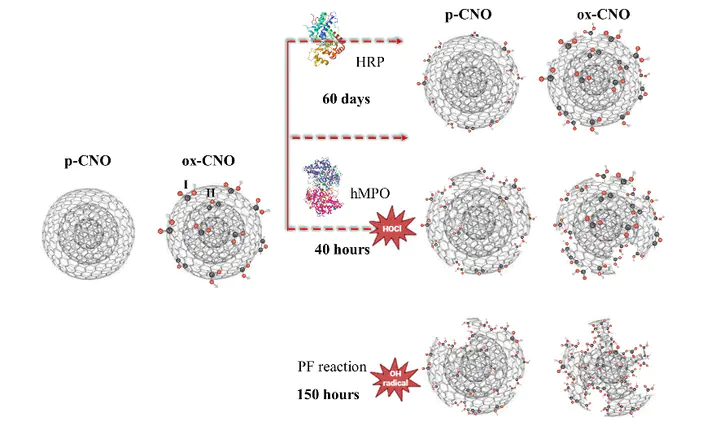
Abstract
The biodegradability of carbon nanomaterials (CNMs) in the environment and organisms needs to be understood, and it is highly essential to estimate their in vivo fate, especially for clinical applications. It is also important to investigate their metabolites formation to fully understand their biocompatibility. Herein, we explored the biodegradability of multilayer fullerenes, better known as carbon nano‐onions (CNOs), by treating them with human myeloperoxidase (hMPO) isolated from the neutrophils, plant enzyme horseradish peroxidase (HRP) and the photo‐Fenton (PF) reaction. High‐resolution electron microscopy (HRTEM), Raman spectroscopy, X‐ray photoelectron spectroscopy (XPS), and mass spectrometry (MS) results confirmed that CNOs are not bio‐persistent. Moreover, these results indicate that the oxidized (functionalized) CNOs can undergo faster biodegradation than the pristine CNOs. The possible by‐products of biodegradation of CNOs were characterized using mass spectrometry. An understanding of the biodegradation properties of CNOs and their metabolites is fundamental for future biomedical applications.